|
On November second every year, we celebrate the Feast of All Souls’ Day. It is a day when we are meant to remember and pray fervently for the souls of those who have gone before us marked with the sign of faith, especially our loved ones. While it isn’t a holy day of obligation, it is a beautiful opportunity to go to Mass if you are able. At Mass on All Souls’ Day, there’s a chance you might hear special music that you’re not used to hearing every Sunday. The reason for this is that there is a long and storied tradition of praying for the repose of souls in our music. This dates back to the very beginnings of Gregorian chant hundreds and hundreds of years ago. The sheer volume of work dedicated to this subject shows us the importance of the day and the importance of praying for our dead and remembering them always. Going back all the way to the beginning, we look to the simple chants sung at requiem Masses (Masses for the dead) that have implanted themselves in the musical tradition of All Souls’ Day. For instance, you might be familiar with the beautiful chant “In Paradisum,” the text of which is sung at every funeral, in which we ask for eternal rest in paradise for the deceased, entrusting them to the angels to take them to the bosom of Abraham. There are many different versions of this chant, from very modern to traditional and choral. The same goes for the other requiem texts, the “Dies Irae” being another. Moving forward in history, we see some of the greatest composers creating masterworks called “requiems.” In these, the special prayers for Masses for the dead mentioned above as well as the prayers that are sung at ordinary Masses (like the “Kyrie”) are set to music. Usually they were written for choir as well as orchestra or organ, some requiring hundreds of musicians. Some of the most famous requiems are Mozart’s, Verdi’s, and Fauré’s. You may hear selections of these at All Souls’ Day Masses, or at special concerts dedicated to the feast, or during the season of Lent. Listening to recordings of them is also a wonderful supplement to your prayers during this time. One of the most famous pieces of music within the tradition of All Souls’ Day is the “Pie Jesu.” Again originating from the prayers of the Mass for the Dead, the text reads, “Pious Lord Jesus, give them rest. Pious Lord Jesus, give them everlasting rest.” This prayer has become one of the most frequent inspirations for performances and composers, as the prayer itself is so simple and beautiful. There are so many beautiful versions, including one—among the most popular—composed by Andrew Lloyd Weber, the composer of The Phantom of the Opera. Whatever your taste in sacred music, there is much to be gleaned from the vast stores of music history with regard to All Souls’ Day. For a thousand years, composers have taken to the page to help us better pray for our deceased loved ones. This year, why not find a requiem that you haven’t heard before, or listen to Andrew Lloyd Weber’s “Pie Jesu”? Ask God to help you to pray for the souls of your loved ones through this music as millions of people have done before you and will continue to do as long as music lives. **This blog was originally published on November 2, 2022.**
0 Comments
With the newliturgical year beginning this first Sunday of Advent, I am making a resolution to approach each liturgical season and day with more intentionality. In my collaboration with religious communities, I have come to admire the way they commemorate the life of their particular community within the rhythm of liturgical feasts and seasons. Their communal prayer is often guided by an ordo, a list specific to each community and/or diocese that organizes the dates of feasts (particularly those special to the community, such as patronal feasts or local saints), readings, and a necrology (the anniversaries of the deaths of members of the community) for each day. They also celebrate milestones and anniversaries of the profession of final vows and ordinations.
Why not approach the liturgical year in a similar way in our own family, our domestic Church? We too can strive to be more mindful about preparing for and celebrating special days within our Church and our family, taking time beforehand to plan which Mass to attend or finding other creative ways to observe a feast or special occasion. As we approach this new liturgical year, it may be a good time to look ahead and make plans to mark not only the big celebrations, like Christmas and Easter, but also every feast day your family may want to celebrate. Certainly this includes birthdays and anniversaries, but it also means making note of
To find some of these dates, you may need to refer to sacramental records, such as a Baptismal Certificate, or consult family members. Personal planner templates available online can be customized to mark these dates, and once you’ve compiled a basic list, you can continue to add to it year after year. You may also wish to set aside a few special items for these celebrations, such as a bottle of holy water, a baptismal candle or baptismal garment, pictures from the event observed, holy cards, or images of the saints or family members commemorated. Children may particularly enjoy setting up a prayer space to reflect the occasion. One helpful resource for planning is the Catholic Apostolate Center’s feast day website, which has information about the saints organized by feast day, region, time period, and more. Another useful resource is a book entitled Catholic Household Blessings and Prayers from the United States Conference of Catholic Bishops. It contains special blessings for birthdays, name days, and baptismal anniversaries as well as short daily prayers; seasonal blessings and prayers; blessings for life events such as graduations, birthdays, engagements, pregnancy, childbirth, adoption, and moving into a new home; and prayers for times of sickness and difficulty. You can even make it a practice to have a special meal on these days, choosing a menu related to the feast being observed or simply enjoying the favorite foods of the person being celebrated. Not only can you take the opportunity to share about your faith, but you can also share a bit of family history and bring the liturgical year to life in a more personal way. By doing these things, we learn more about the mysteries and people of faith commemorated, even as we strive to emulate them. We also join in the age-old tradition of the “People of God [who] have observed fixed feasts, beginning with Passover, to commemorate the astonishing actions of the Savior God, to give him thanks for them, to perpetuate their remembrance, and to teach new generations to conform their conduct to them” (Catechism of the Catholic Church, 1164). This approach of gratitude, remembrance, and faithfulness may help us live the liturgical seasons more fruitfully, as we unfold throughout the course of the year the various aspects of “the whole mystery of Christ from his Incarnation and Nativity through his Ascension, to Pentecost and the expectation of the blessed hope of the coming of the Lord” (Sacrosanctum Concilium, 102 §2). May this new liturgical year truly be a “year of the Lord’s favor” (Lk 4:19)!
The Church has organized the liturgy—seasons, feasts, readings, prayers, sacramental rites, et cetera—in a way to instruct the faithful, helping them to enter more deeply into the mysteries of the faith present within the sacraments. As the Catechism of the Catholic Church teaches, the liturgy is “the privileged place for catechizing the People of God” (Catechism of the Catholic Church (CCC) 1074). A liturgy professor of mine would often spend the first fifteen minutes (at least) of class discussing the liturgical celebration of the day—the saint or event commemorated, the prayers and readings—or the upcoming Sunday’s prayers and readings. This professor would even point out to us how the names and titles of certain celebrations are a source of instruction for the People of God.
Yesterday, August 29, we celebrated the Memorial of the Passion of Saint John the Baptist. The deaths of all martyrs can be spoken of as a “passion,” but there are only two passions which are given that title in the Church’s liturgical calendar—John the Baptist and Jesus Christ. Why? We can first consider that these deaths are the only passions recorded in the Gospel accounts. Also, we should take note of how the death of John the Baptist prefigures the death of Christ. As John led others to follow Jesus and proclaimed the truth without fear—even to a high-ranking official—he was arrested and put in prison. Jesus was arrested on account of the Gospel message he taught and the works he performed, which challenged and called out the religious leaders of the time. Others sought to kill John, and King Herod conceded to this death despite his distress. The religious leaders sought the death of Jesus, and Pontius Pilate conceded to this death despite finding the man innocent. In whole, the life of John the Baptist—his birth, ministry, and death—is so closely connected to the life of Christ and mysteries of the faith that we commemorate his death as a passion. We recognize his death as a model of the summit of Christian witness: participating in the passion of Christ and thus in the work of salvation. In the memorial of John the Baptist’s passion, we hear prayers and readings which point us to this truth. This can be seen if we reflect upon the collect (opening prayer) of this feast: “O God, who willed that Saint John the Baptist should go ahead of your Son both in his birth and in his death, grant that, as he died a martyr for truth and justice, we, too, may fight hard for the confession of what you teach.” The liturgy teaches us the faith, and in being taught by the liturgy, we enter more deeply into the great mystery that guides our lives as Christians. Do not let the feasts we celebrate and the prayers and readings we pray pass you by; draw truth and life from them. “It is this mystery of Christ [the Paschal Mystery and work of salvation] that the Church proclaims and celebrates in her liturgy so that the faithful may live from it and bear witness to it in the world” (CCC 1068). In the Church, we have a timely liturgical schedule of feasts, seasons, and commemorations. Each year, we practice prayer, fasting, and almsgiving during the season of Lent in order to prepare ourselves for the Resurrection of the Lord at Easter. In Advent, we hear readings from Isaiah that help us to turn our attention to the coming of Christ both in his nativity at Christmas and at the end of time. In addition to these seasons, we also celebrate individual days as part of practicing our faith. On St. Therese’s feast day, we ask for roses to cross our path to confirm her intercession for us. On All Souls’ Day, we remember those who have died and pray for their sanctification. According to paragraph 102 of the Dogmatic Constitution on the Sacred Liturgy, or Sacrosanctum Concilium, in celebrating these feasts and seasons, the Church “unfolds the whole mystery of Christ, from the incarnation and birth until the ascension, the day of Pentecost, and the expectation of blessed hope and of the coming of the Lord.” In other words, the variety of feasts and seasons allow us to contemplate the life and mystery of Christ from different angles. For example, at Christmas, the Church looks with awe upon God becoming human in the Incarnation. On the feast day of the Annunciation, we reflect on God’s total initiative to redeem the human race with the collaboration of Mary’s fiat. Celebrating the witness of the saints on their feast days inspires us that we too can witness to the love of God in large and small ways in our lives. Each of these examples gives us glimpses at aspects of our faith and renews our devotion to “the whole mystery of Christ.” Why is it important to mark particular days and seasons as days to commemorate certain aspects of our faith? Further along in paragraph 102 of Sacrosanctum Concilium, we find the answer: “Recalling thus the mysteries of redemption, the Church opens to the faithful the riches of her Lord's powers and merits, so that these are in some way made present for all time, and the faithful are enabled to lay hold upon them and become filled with saving grace.” In short, celebrating these feasts and seasons help us grow in grace. We hear readings that help us think about what the feast commemorates. We pray particular prayers that ask for the intercession of the saints we celebrate. We participate in special traditions, such as creating offrendas during All Souls Day, or preparing large feasts on the feast day of St. Joseph. Because of the liturgical calendar, we are invited to stop and be drawn into contemplation of the love of God. The love of God is not something we are invited to contemplate only on days or seasons marked by the official liturgical calendar. In addition, we can also continue to allow our attention to be drawn to the love of God in the feasts and seasons in our personal lives. For example, we might keep vigil on a particular date each year to remember the death of a loved one. We might even mark the difficult or challenging events of our lives, such as the date of a breakup, the date of a move away from a former home, or the date of a medical diagnosis. On the other hand, we may call to mind particular dates of joyful occasions, such as the acceptance into a school, a proposal or marriage, or coming home from military service. Just like formal feast days, the informal feast days of our lives also allow us to contemplate the mystery of Christ and the love of God through different lenses. The date of a breakup might remind us of the pain we went through, but the eventual freedom we may have found later on by trusting in God’s providence. Commemorating the date of the death of a loved one each year might give us the chance to reflect on the gift of friendships and relationships in our lives and how they have contributed to our growth and becoming. Keeping memory of the date of an initial medical diagnosis might allow us to think about our reliance on God and remind us to unite our suffering with Christ’s suffering. The anniversary of a wedding or proposal punctuates our lives with gratitude for a partner or spouse. In keeping our own personal liturgical calendar in addition to the Church’s formal liturgical calendar, we are invited to contemplate the “whole of the mystery of Christ” in our own personal lives. We can reflect upon the love and providence of God made manifest not only in the feast days of the Church’s formal liturgical calendar, but also in the significant events in our lives that have drawn us deeper into the mystery of our own relationship with God and others. By punctuating our lives with universal and personal liturgical feasts, we call to mind Christ’s words in the Gospel of Matthew in a profound way: “And behold, I am with you always, until the end of the age” (Matthew 28:20). What are some days or seasons in your life that you might add to your personal liturgical calendar? In remembering these dates, how are you being invited to contemplate God’s love for you?
During our marriage preparation, my husband and I made a mission, vision, and values spreadsheet for our marriage goals (nerdy, we know!). Part of our goals include living an authentic Catholic lifestyle, which we believe integrates the liturgical season into our new family unit. Some of my favorite memories from childhood include cooking and baking with my mom and having meaningful discussions with my parents about our Catholic faith. Traditions like these are important to my husband and me, and we look forward to continuing to build off of our parents’ traditions while adding our own. To build traditions within our family, we’ve started with the idea of liturgical living. Liturgical living brings the life and breadth of the Church into our own homes and can be accomplished through certain prayers, celebrations, meals, crafts, and other traditions. This can also be described as building up the domestic church – which may be even more important than ever during the Covid-19 pandemic. As newlyweds, we have slowly added liturgical season traditions into our daily lives, such as celebrating saint feast days and preparing our house for Advent and Christmas. A New Year’s resolution we’ve set for ourselves in 2021 is trying to incorporate more of the Church’s liturgical seasons into our home to better appreciate the richness of our Catholic faith. One of our favorite wedding gifts to help us implement our goal of liturgical living is The Catholic All Year Compendium by Kendra Tierney. Tierney shares how her family celebrates the Church’s liturgical season 365 days a year. She starts off the book by encouraging families to begin celebrating what makes the Catholic faith most approachable to each family member – saint namesake feast days and Baptism anniversaries. Special meals and desserts, prayer, stories, activities, and conversations are different ways to make the celebrations meaningful. After noting namesake feast days and baptisms, Tierney recommends starting slowly and gradually, adding in other feast days important to each family and doing things that already fit into existing daily routines. The free calendars given out at church for the new year have these dates with the liturgical year, such as Ordinary Time, Lent, etc. A fabulous Christmas present I also received last month is the Blessed Is She planner that incorporates feast days and the liturgical year. This is all a process that takes time and can be added upon each year or changed. It shouldn’t be meant to overwhelm. In our annual family planning meeting for 2021, my husband and I went through each month and picked which feasts we’d celebrate after our saint name days and baptisms. Our church even made our first feast day celebration easy by providing us blessed chalk and a prayer to say while marking 20 + C + M + B + 21 above our front door mantle for Epiphany on January 6! We’ve also added making “king cake” cinnamon rolls for dessert as part of the tradition. How do you plan to incorporate Catholic liturgical living into your family’s routine this year? What are some of your favorite liturgical living traditions? If you practice liturgical living already, how has this helped your family learn about the Catholic faith? For more resources on Marriage and Family, please click here. When I was an undergraduate student studying Pastoral Ministry, I was privileged to take a class on Vatican II. One of the main documents that our course was devoted to was Sacrosanctum Concilium, or the Dogmatic Constitution on the Sacred Liturgy. Sacrosanctum Concilium is a notable document for many theological and pastoral reasons, including for the allowance of the liturgy to be celebrated in the vernacular language of local communities (36), the restoration of the adult baptismal catechumenal process employed in the early Church (64), and also the elevation of Gregorian chant as having “pride of place” in the liturgy (116). Calling it a “sacred action of Christ the priest and of His Body which is the Church” (7), the document distinguishes the liturgy as the principal act of prayer of the Church: “Nevertheless the liturgy is the summit toward which the activity of the Church is directed; at the same time it is the font from which all her power flows” (10). Besides naming the significance of the liturgy for a Church that was struggling to find her place in the midst of the modern world, Sacrosanctum Concilium also sought to form and instruct Catholics in celebrating the liturgy with “proper dispositions” (11) of their minds and hearts. In other words, for many Catholics, the liturgy was often misunderstood, attended only out of habit, or was participated in only half-heartedly. The document sought to remedy this by naming the desire of the Church “that all the faithful should be led to that fully conscious, and active participation in liturgical celebrations which is demanded by the very nature of the liturgy” (14). Full, active, and conscious participation was the standard that Sacrosanctum Concilium set for celebrating the Mass as a part of Christ’s body, the Church. In other words, according to the document, liturgy is not a spectator sport. In the liturgy, we actively remember and participate in the offering of Christ’s Body and Blood for the redemption of the world. When we attend Mass, salvation unfolds before our eyes through the words of Scripture we hear, the prayers we offer for the Church and the world, and the offering of the bread and wine by the priest on behalf of the community. In order to receive the graces of salvation that unfold before us in the liturgy, we must participate in the liturgy fully, actively, and consciously, ensuring that our “minds should be attuned to [our] voices, and that [we] should cooperate with divine grace lest [we] receive it in vain” (11). Though the liturgy is the principal act of the Church, salvation also unfolds outside of it, especially in our daily lives and experiences. Human experience is “a locus for the manifestation and realization of salvation, where God, consistently with the pedagogy of the Incarnation, reaches man with his grace and saves him” (General Directory for Catechesis, #152c). Like the liturgy, salvation unfolds right before us in our daily life; however, have we cultivated the “proper conditions” in order to receive its graces, or to even notice it? How can we apply these principles of full, conscious, and active participation in the “liturgy of our lives”? How might full, active, and conscious participation in our lives move us to a more mature faith? Full When someone has asked us for our “full” attention, what comes to mind? We may think of putting aside our cell phones to listen intently, indicating our interest and presence through appropriate body language, or taking the time to ask clarifying questions. In other words, giving full attention is an act of the entire human person—mind, body, and soul. Do we give the grace unfolding in our lives the same attention? Are we ready to put aside the things that may distract us from God so as to focus on God more readily? Does our treatment and use of our own body indicate our devotion to God and our openness to the work of the Holy Spirit? Full participation in our life moves us closer to spiritual maturity because it helps us seek integration. This includes ensuring that our actions, words, disposition, thoughts, and use of our body communicates our devotion to God and “compose[s] a single movement towards doing the will of God” (The Art of Accompaniment, 19). Are we moving with our entire personhood towards the will of God? A life lived with full participation is one that seeks integration. Active At certain points in our lives, it is easy to fall into a “maintenance” mindset instead of the mindset of mission. With an endless amount of decisions to make each day, an exhausting pace of life, or the constant struggle to catch up or move ahead, we can often fall prey to settling on surviving in our work, ministry, or lives in general. Additionally, we can be paralyzed by the multitude of paths and options in our lives. However, the work of a disciple is to continue moving forward towards Christ, even amidst uncertainty or doubt. As Pope Francis reminds us, paralysis in our lives caused by anxiety, worry, or exhaustion should not prevent us from living our call to be missionary disciples: “Anxiety can work against us by making us give up whenever we do not see instant results. Our best dreams are only attained through hope, patience and commitment, and not in haste. At the same time, we should not be hesitant, afraid to take chances or make mistakes. Avoid the paralysis of the living dead, who have no life because they are afraid to take risks, to make mistakes or to persevere in their commitments. Even if you make mistakes, you can always get up and start over, for no one has the right to rob you of hope” (Christus Vivit, 142). Though our progress in seeking holiness might not be linear and may involve many mistakes, it is always forward moving as long as we fix our hearts on Christ. A life lived with active participation is one that continually strives forward. Conscious Being attentive to grace in our lives and seeking mature faith requires intentionality. No one seeks holiness by accident; missionary discipleship requires that we make intentional choices each day to follow Christ in both small and large ways. As Pope Francis says, missionary discipleship requires the initiative of “taking the first step”: “The Church which “goes forth” is a community of missionary disciples who take the first step, who are involved and supportive, who bear fruit and rejoice. An evangelizing community knows that the Lord has taken the initiative—he has loved us first (cf. 1 Jn 4:19)—and therefore we can move forward, boldly take the initiative, go out to others, seek those who have fallen away, stand at the crossroads and welcome the outcast” (Evangelii Gaudium, 24). In order to take this first step, we must intentionally and consciously choose which way to walk. We must seek to grow in our faith on purpose. A life lived with conscious participation involves being intentional in directing our steps on the pathway towards Christ. In examining our lives by the standards of “full, active, and conscious” that Sacrosanctum Concilium names, we can bridge the gap between liturgy and life. Like full, conscious, and active participation in the liturgy, full, active, and conscious participation in our lives properly disposes us to notice God’s action and cultivate the conditions that will prevent us from receiving the graces of salvation in vain. Like liturgy, our lives are not a spectator sport. If we seek integration, commit to continuing to move forward, and intentionally make choices to walk towards Christ, we can make our entire life an offering to God through Christ in the Holy Spirit.
As we celebrate the Nativity of our Lord Jesus Christ at Christmas, I find myself grateful that the Church has established the liturgical calendar in such a way as to help shake us out of our spiritual complacency. The high-points of the Church year—and the larger Christian experience— are referenced so much in our Faith that we may sometimes find ourselves on spiritual autopilot. Before we know it, we might find that solemnities are immediately upon us (or past us), and we feel that we could have benefited from more spiritual preparation. This year, I was looking for a clear and direct theme I could really focus on as Christmas approached. I came across some writings of Venerable Servant of God Fulton Sheen that called to mind certain details of Scripture that my eyes (and spiritual life) might typically gloss over. Recalling the helpless innocence of the Christ-child ready to be born of Mary, Sheen related Mary and Joseph’s plight in searching for late-night shelter in Bethlehem to the lack of hearts open to God which can offer the King of Kings and Lord of Lords a place to dwell and reign:
[W]hen finally the scrolls of history are completed down to the last word of time, the saddest lines of all will be: ‘There was no room in the inn.’ The inn was the gathering place of public opinion, the focal point of the world’s moods, the rendezvous of the worldly, the rallying place of the popular and the successful. But there’s no room in the place where the world gathers. The stable is the place for outcasts, the ignored, and the forgotten… The lesson is: divinity is always where you least expect to find it. So the Son of God-Made-Man is invited to enter into His own world through a back door.[1] With all the seasonal emphasis on gifts and personal generosity, I am especially touched by that first line and the reality that there was no room made available for the arrival of the long-awaited Son of God. How often do we hear calls to be watchful and ready for the Second Coming of Christ; that is, to be repentant of sin and committed to pursuing holiness? This preparation is what the first part of the Advent season is all about. When we are called before the Final Judgement seat of the Most High, and God Himself shows us what we did or did not do for Him[2] in our earthly encounters with the people in our lives, will we say that it was too difficult or inconvenient to take up what we knew was expected of us? All of the baptized are called to be missionary disciples—people who spread the joy of the Gospel by their very lives. We can bring others into an encounter with the Living God—or at least instill a sense of hope, dignity, and love in those who are in need—in the workplace, at home, in our neighborhoods, in our parishes, and within our families. In doing so, we make room in the inn of our hearts for the Christ-child. Without Christ present in our hearts and at the core of our being, we will find ourselves serving a different master—be it vices, worldly pleasures, fleeting successes or honors, or other vanities. Just as the innkeepers of Bethlehem two-thousand years ago declined to open their doors to the Holy Family, so too do each of us have the choice either to be seduced by the empty promises of the world or to pursue a life of holiness and of speaking the Truth among the doubtful, suspicious, hateful, or unrepentant. This Christmas season, let us allow Christ into our lives in order to bring him to others. Let us preach the Gospel with our lives and seek to always make room for him in the inn of our hearts. Christmas is a time for celebration! We rejoice that the Lord God Himself took on human nature and was born as a helpless Child into the world He created in order to free us from sin and death and invite us to live with Him forever. The occasion of Christmas encourages each of us to be a welcoming soul to the Lord rather than one who closed their doors to the Holy Family that holy night: Joy to the world, the Lord is come! Let earth receive her King! Let every heart prepare Him room. And let it begin with me. Amen. [1] Sheen, Fulton. “Life of Christ” (1954). [2] cf. Matthew 25:40. A few weeks ago, the Pew Research Center released an article titled “Just one-third of U.S. Catholics agree with their church that Eucharist is body, blood of Christ.” Immediately after the study’s release, social media erupted with reactions of disbelief, shock, and anger, as well as theories of how to “fix this,” including greater catechesis and adjustments to our general liturgical practices. Despite the immediate reaction, there is no need for panic, as Christ assures the Church that “the gates of the netherworld shall not prevail against it,” (Matthew 16:18). Furthermore, jumping to such dire conclusions after one survey is not necessarily good pastoral or catechetical practice. As the Church examines the status of belief in the Real Presence and how to cultivate a greater understanding of that reality, she is also very aware of the need to deepen our encounter with Christ. As we ponder Christ’s presence in the Eucharist, we must ask ourselves if we have truly encountered him. In his encyclical letter Evangelii Gaudium, Pope Francis suggests that we “look at those first disciples, who, immediately after encountering the gaze of Jesus, went forth to proclaim him joyfully: ‘We have found the Messiah!’ (Jn 1:41).” In the end, how we catechize and what our liturgical practices are both require deeper reflection and greater discernment as to how God is calling us to use them as methods of ongoing conversion and evangelization. The doctrines and dogmas that we teach, how we celebrate the Mass, how we best serve our fellow man, are all likely to fall on deaf ears if they are not built on a deep and personal encounter with the Risen Christ. To examine this issue of Eucharistic belief, we should first look to chapter 4 of Christus Vivit, where Pope Francis reminds young people (and all of the people of God) that God is love, he saves us, he gives us life, and he is alive! If these four truths, which are expounded upon in good catechesis and experienced in their fullness in the Mass, are not understood deeply and intimately in the heart of every baptized Catholic, then moving forward will be extremely difficult. If I do not know Christ as the one who saves me, who walks with me through my life, as the one who gives me life, then why does it matter if it is truly his Body and Blood that I receive in its fullness at the Mass? Similarly, if we don’t understand the Kerygma—the mystery of the salvific work of God culminating in the passion, death, and resurrection of Christ—then how can we begin to understand the mystery of transubstantiation (CCC1376), especially when philosophical distinctions like matter and form aren’t in the everyday vocabulary of most Catholics? Pope Francis reminded pilgrims of this reality during a November 2017 General Audience when he said, “Every celebration of the Eucharist is a ray of light of the unsetting sun that is the Risen Jesus Christ. To participate in Mass, especially on Sunday, means entering in the victory of the Risen, being illuminated by his light, warmed by his warmth.” Pope Emeritus Benedict XVI famously wrote in his encyclical letter Deus Charitas Est, “Being Christian is not the result of an ethical choice or a lofty idea, but the encounter with an event, a person, which gives life a new horizon and a decisive direction.” I certainly don’t have the “easy fix” answer as to how to increase belief in the real presence in the Eucharist, but I heartily believe that it begins with a renewed sense of the encounter Pope Benedict XVI was writing about. We use the word “renewed” because even those of us who profess our faith in the Risen Lord are invited “to a renewed personal encounter with Jesus Christ, or at least an openness to letting him encounter them; I [Pope Francis] ask all of you to do this unfailingly each day” (Evangelii Gaudium). We must witness to the encounter that has given our lives “a new horizon and a decisive direction,” and share that with those whom we meet. When we accompany our brothers and sisters on their journey to know Christ more fully, we help them to encounter him in the way that the Holy Spirit guides them. If that encounter is through theological and philosophical distinctions, through service, through the liturgy, etc. then praise God, because it is through him that those are effective and not because of their own merits. As we continue to wrestle with this recent study and its implications, may we meditate on this: if we believe that the Eucharist changes us, strengthens us, heals us, then we must show it, we must witness to it authentically and humbly in all circumstances. Holy Week can be the most emotionally intense period of the liturgical year. Beginning with Palm Sunday, we notice some changes to the usual liturgy, namely: the opening reading, the much longer narrated Gospel, the red vestments, and the presence of blessed palms. As the week continues, our anticipation may be building towards an emotional peak, probably the commemoration of Christ’s death on Good Friday or His Resurrection on Easter Sunday. We may be tempted to take it all in stride and grimace at the raw details of Jesus’s sacred Passion while holding on for the joys of the Easter proclamation. We are, after all, the “Easter people and Alleluia is our song,” according to St. John Paul the Great. I have found myself guilty of this detachment sometimes and now propose, as we have already entered Holy Week, that we immerse ourselves into the intense details—that raw, human emotion—of the Triduum in order to accompany Christ more closely during the most significant moments of His earthly ministry and the fulfillment of salvific history.
On Palm Sunday, we celebrate the entrance of the Savior into Jerusalem, that sacred capital of the Jewish nation then occupied by the Roman Empire. The joys and uproars that Jesus’s entrance brings facilitate the events at the end of the week, when we observe the frenzied crowd turning against the One they now hail as the long-awaited Messiah. Of course, Jesus knows fully what will come to pass in the next days before the Passover. Do we stand among the crowds welcoming Jesus into our hearts and wanting Him to rule over us as the eternal Heavenly King, or are we like the jealous plotting authorities who resent Jesus over His exposure of our hypocrisy and prideful nature? The days between Palm Sunday and Holy Thursday are filled with anticipation. An observer of the times could tell something big was about to happen in Jerusalem. The holy city would soon be embroiled in the rancor sowed by the authorities against Jesus rather than preparing to celebrate the annual Passover meal. Are we spending this time of calm in prayer and preparation in the presence of the Lord, or are we going about our daily routine until we face the ugliness that has been fermenting against Jesus and that forces us to decide if we will stand against the crowds for the sake of the Savior? Holy Thursday arrives and already the focus may be towards the one evening Mass scheduled at the parish. Many dioceses celebrate the annual Chrism Mass earlier in the day, during which the sacred oils of ministry are blessed by the bishop and distributed among the parishes from the cathedral. In the evening, the Last Supper and the Agony in the Garden of Gethsemane are commemorated with liturgical richness: the humble washing of feet, solemn processions, chanting, the use of candles, Eucharistic adoration after the tabernacle is emptied, and then… silence. There is so much to unpack. We can ask ourselves: Am I heeding the Lord’s request to “Keep watch and pray”? Am I remaining vigilant and faithfully at the side of our Lord as he leads the Passover meal, praying with Him in the garden, or not abandoning Him during His arrest? We, of course, cannot celebrate Easter Sunday without recalling Good Friday. This year, I invite you to place yourself at the foot of the cross and gaze upon Christ crucified. With the Blessed Mother and St. John beside you, behold the sight of the suffering Savior, scourged and dying. Listen to His seven final words and feel their intensity. Here the cruelest injustices have been heaped upon Jesus; He bears them willingly and lovingly. Recall your own failings, which have driven nails and scourged the sacred flesh of our Lord. This can be a true time of repentance and faith. Do I offer even a fraction of the love being poured out from the cross this day? The darkness of Good Friday recedes, Holy Saturday arrives and there is…more silence. Our Beloved Lord has died and there is a sudden emptiness as we come to terms with the reality that the departed is gone. We must not gloss over this period before Easter Sunday: take time to mourn for our Lord and the human acts of sin which buried Him in the tomb. It had to occur, but it is not the end. We do not mourn for the dead as if we have no hope— because of the Resurrection, Christians do not fear death or even despise suffering. Jesus bore the worst in humanity with love and died to accomplish salvation for all who seek it. In the holy silence of Holy Saturday, am I reflecting on the events that have passed, long foretold by the biblical prophets, as Mary and the disciples did in the Upper Room? On Saturday evening, we experience the Easter Vigil. This extraordinary Mass begins in darkness outside the Church with the Service of Light in which a “blazing fire” is used to light the Paschal candle. This candle processes through the church and is used to light the unlit candles of all present. Nine readings from the Old and New Testament are read, recounting significant moments of salvation history. It is during this Mass that the Church also welcomes new members from the Rite of Christian Initiation of Adults into the Body of Christ. The congregation joins in the renewal of baptismal promises and recalls their own Sacraments of Initiation. In the wonder of this Easter Vigil, are we joining wholeheartedly in the joy and celebration of the Resurrection? Do we marvel at the re-telling of the mighty acts of God throughout human history? Do we rejoice in welcoming new members to the Church? Finally Easter Sunday, the world rejoices with the proclamation, Christus vincit! Christus regnat! Christus imperat! Christ conquers! Christ reigns! Christ commands! We proclaim Christ’s great salvific act but do not shy away from what He endured to accomplish that eternal victory. We glorify Christ who has ascended from the depths of death to rescue humanity and deliver them to the throne of God. Nothing like this has happened before. The world celebrates God’s great love! Do we joyfully proclaim Christ to those who have no hope in their lives, who yearn for meaning and purpose? By taking the time each day of Holy Week to reflect upon the nuances and details of these great events in Scripture, we can better prepare for the emotional gravitas of the liturgies this week and accompany Christ himself. The graces of standing firm and being witnesses to His Passion can yield the same reward first achieved by the good thief crucified next to Jesus, to whom Christ declared, “Today you will be with me in Paradise.” For more resources to accompany you in your Lenten and Easter journeys, please click here. Happy New Year! We have officially brought the Church year to a close and have entered into a new liturgical year with the first week of Advent. It is a time of new beginnings and yet a profound time of waiting and preparation as we anticipate the joy of the birth of a tiny babe in a manger. I find it interesting that this time of waiting comes right at the beginning of the new liturgical year. In the secular world, New Year’s celebrations are immediate and urgent. We count down to the strike of midnight, kiss our loved ones, announce our resolutions, and toast the entrance of the next phase. Some of us celebrate the end of another passing year with relief. Some feel a deep hope and longing that the year to come will bring with it some rest and release from the trials and tribulations of the previous year. Others celebrate the successes of the year and look forward to hopeful continued success. No matter which category you fall into, the secular New Year brings with it some sense of urgency, of immediate change. In the Church’s liturgical year, we celebrate our “New Year’s Eve” with the celebration of Christ the King on the last Sunday before Advent. In Pope Francis’s 2013 homily he reminded us, “Jesus is the center of creation; and so the attitude demanded of us as true believers is that of recognizing and accepting in our lives the centrality of Jesus Christ, in our thoughts, in our words and in our works.” Pope Pius XI instituted this celebration in 1925 to help remind us that, “while governments and philosophies come and go, Christ reigns as King forever.” Can you feel it? Can you feel the excitement, hope, and assuredness infiltrating you as a believer of Christ, King of the Universe? And then we wait… This stark contrast brings with it the perfect time for reflection and re-evaluation. In thinking and reflecting on the Advent season at the beginning of this new liturgical year, I’m struck by the images that come to mind. The slow burn of a candle in the window, darkness in anticipation of the light of morning. We are searching, seeking, wanting, waiting. “Not all who wander are lost,” J.R.R. Tolkien wrote. Over the years it has become a fairly well known quote. How does this quote speak to you this Advent season? At times we may wander through the ebb and flow of our daily lives and this quote seems to reach out to us in an attempt to comfort us when we find ourselves in this place. But let’s take a deeper look at this particular quote. What does it mean to wander? To wander is to walk or move in a leisurely, casual, or aimless way. In what areas of your life have you been wandering? More importantly, do you know where you are going? Advent is the perfect time for reflection and re-evaluation. “Not all who wander are lost.” Is it true? Sometimes we need the casual and the leisurely. It can be good to have a moment to take a breath. This time of Advent at the beginning of our new liturgical year, though, is a time to challenge ourselves. Are we still wandering? Have we lost sight of our aim? Perhaps Advent is calling us out of our time of wandering and into a time of wondering. To wonder is to desire or be curious about something; to feel amazement, to marvel. What is your heart longing for this Advent season? Where in your life are you being called into a deeper relationship with Christ, King of the Universe? He is coming and His desire to know and love us is so great that He is coming as a vulnerable and dependent baby in a manger. “They name him Wonder-Counselor, God-Hero, Faith-Forever, Prince of Peace.” (Isaiah 9:5) He is coming. Are you ready? This season, let us remember, all that WONDER as they behold the Christ child will never be lost. Question for Reflection: What is your heart longing for this Advent season? For resources to prepare you for the Advent season, please click here. For many families it’s a Thanksgiving tradition to go around the table and express what each person is thankful for before digging into the meal. Families may share many of the same reasons they give thanks, though each person is often impacted differently or expresses their gratitude uniquely. This type of intentional gratitude sets the preparation-intense Thanksgiving meal apart from every other bread breaking (or rather turkey wishbone-breaking).
Giving thanks is, of course, not limited to just the third Thursday of November. Opportunities and reasons to give thanks are infinitely abundant throughout the year. It’s not just about speaking about gratitude, but living it as a blessing in life from God Almighty. This time of Thanksgiving in the United States reminds me that “… all good giving and every perfect gift is from above, coming down from the Father…” Whether we realize it or not, we give thanks to God each Sunday in and with our parish community. When the faithful gather for Mass, they gather for the Eucharist (which means “thanksgiving” in Greek). Just as when Christ Himself instituted the Eucharist at the Last Supper two thousand years ago, the Mass commemorates the real sacrifice of God the Son in atonement for the sinful debt humanity had incurred. In St. Luke’s account, our Lord, knowing that His Passion was to come, “eagerly desired” to share the Passover meal with His disciples. During the meal, Jesus gave thanks to His Father for the True Bread, His Body, that would be broken for us. That is, He thanked the Father that He was able to offer Himself for our redemption (cf Luke 22:22). Since Christ Himself set this standard for us to express our gratitude in life, let us strive to imitate Him and look for opportunities to give thanks, even in the midst of suffering. As the Sacrifice of Holy Mass is the ultimate prayer humanity can offer, it is the perfect opportunity to express our prayerful thanksgiving to God. The priest gathers the intercessions of the faithful into the prayer offered before the Liturgy of the Eucharist. Usually there is a petition to offer one’s personal prayers in the silence of his or her heart. At this I often marvel: what private needs are being prayed for by my fellow parishioners? What circumstances are awaiting my fellow Christians once they depart the church’s pews? That itself presents to me a witness to be grateful for: each person who wanders into a church seeks help from the One he or she knows will certainly and lovingly listen and answer. These are touching acts of faith in our God, who provides meaning and comfort to suffering, longing, confusion, and loss! An “attitude of gratitude” is a worthy daily pursuit. It can begin each morning as we remember that life is a gift from God! This attitude can flourish when applied to circumstances of daily life: Thank God I arrived safely. God protected me from that distracted driver! I’m so glad to hear her injury wasn’t serious and recovery is going well. I am grateful to have a forgiving, patient, and loving spouse, especially this morning! I am thankful for this job God has blessed me with to support my family. Let us remember to thank God who so richly blesses us every day, especially through those who touch our lives and care for us. Offer prayers and love to God and to your neighbors, not just during the Thanksgiving meal, but in church, during phone calls (call your parents!), and in other run-ins. May our prayers echo that of the biblical Job, who despite great sufferings and loss faithfully prayed to God, “The LORD gave and the LORD has taken away; blessed be the name of the LORD!” Questions for Reflection: What are you most grateful for this Thanksgiving season? How can you practice a spiritual attitude of gratitude each day? When I was in 8th grade, I helped teach for my parish’s religious education program and counted the hours toward my required community service time before receiving the Sacrament of Confirmation. I was an assistant for the 5th grade, and I thought it was the coolest thing. I could share with the class what I knew about the Church, even teaching them at one point how to pray the Rosary. Looking back, it seems like I was destined to teach in a Catholic school! After college, I began working at my current school in the Archdiocese of Washington (ADW), where I continue to teach and share my faith with the students. To this day, I continue to teach religion. I strive to form my students as disciples according to six elements of Catholic life: Knowledge of the Faith, Liturgy and Sacraments, Morality, Prayer, Education for Living in Christian Community, and Evangelization and Apostolic Life.
For catechists who actively pass on the Word of God to others, teaching the faith can become almost second nature. For instance, at my school, we incorporate core Jesuit principles into the curriculum each day and reflect on our own actions through prayer. In my pre-K classroom, we use these principles to talk about kindness and loving others as St. Ignatius taught. In a special way, my students are learning how to be good friends and love others the way Jesus did. In the Archdiocese of Washington (ADW), the religious curriculum has standards by which its content is measured and assessed—like any other subject area in school. In fact, ADW is trying to support catechists to do more to collaborate and keep kids engaged and excited about learning their faith. Professional development of catechists is crucial to a school, parish, or community. Learning how to be better witnesses of the faith ensures that our children are receiving the best formation of conscience they can get. Although there are people certified and educated to teach as catechists, most of us are already fulfilling that duty as faith-filled adults in the Church who witness to and spread the Gospel. Below is a list I have compiled of a description of a catechist. After reading it, do you feel called to become one?
For more information, we invite you to view the following webinar at the bottom of the page:
Question for Reflection: How can you teach the faith to others in your everyday life? *This post was originally published in May 2017* “Remember you are dust, and to dust you shall return.” -cf Genesis 3:19
On Ash Wednesday, people around the world will hear these words while ashes are crossed onto their forehead. While this isn’t the only phrase that ministers can say during the distribution of ashes, it is the one that makes me stop and ponder the most. When I was younger, this phrase confused me. “Of course we aren’t ACTUALLY dust” was my thought. “When I get cut I bleed blood, not dust! I am made out of flesh and bone!” For years I thought this way, and for years I saw Lent as any other period of 40 days: normal. To me, there was nothing extraordinary about Lent except that it was the time leading up to Easter. Sure, I gave up chocolate and didn’t eat meat on Fridays, but that was it. It wasn’t until high school that I started to realize what exactly the implications of these words are. “Then the Lord God formed man of dust from the ground, and breathed into his nostrils the breath of life; and man became a living soul.” – Genesis 2:7 Dust is natural. It exists as the substance of inception of all mankind. By the will of the Father, through the working of the Holy Spirit, we were given life out of the dust. We often think of dust as the substance that flies through the air or sits on our dresser, not the substance from which we come. Yet God, in his Infinite Love, gave it meaning by transforming dust into our very beings, into humanity. As Pope Francis reflected in his homily on Ash Wednesday last year: “The mark of the ashes with which we set out reminds us of our origin: we were taken from the earth, we are made of dust. True, yet we are dust in the loving hands of God, who has breathed his spirit of life upon each one of us, and still wants to do so.” God, infinitely perfect and whole in himself, desired to create because of his love. We were made out of an outpouring of love of the Trinity. This understanding has changed the way I approach Ash Wednesday. Dust calls us to conversion. It reminds us of our beginning and our end—of our smallness, but also of the greatness of our God. Donald Cardinal Wuerl of the Archdiocese of Washington reminds us that during Lent “We are invited to see ourselves as dust again, to detach ourselves from the things of this world and empty ourselves so that we might be filled instead with God’s ‘breath of life,’ that is, with his eternal Spirit.” By contemplating our beginning and end, we are better able to focus on the eternal life offered by Christ and the resurrection to which we are called. Therefore, Ash Wednesday sets the tone for our Lenten journey as a particular day of fasting, inviting us into forty days of a desert experience as we prepare for the celebration of Easter. Ash Wednesday, helps us to “empty ourselves” as Cardinal Wuerl wrote, in order to be filled with God and more receptive to his promptings throughout the Lenten season. As Pope Francis said in his 2015 Ash Wednesday Homily, Lent helps us then to reorient ourselves “to the arms of God, tender and merciful Father, to trust Him and to entrust ourselves to Him.” The Distribution of Ashes is the only liturgical event of its kind; there is no other time in the liturgical year in which we are called to come forward as a Church and be reminded in such a profound way of our origin, our humanity, and our impending death. This enables us to focus more clearly on the eternal life won for us by Jesus Christ. Cardinal Wuerl continues, “By his Cross and Resurrection, though we be only dust and ashes, we will be made a new creation.” This Lent, I invite you to contemplate the phrase “Remember that you are dust, and to dust you shall return” more deeply. How can we let ourselves experience conversion in order to become a new creation? For more resources during Lent to prepare you for the Easter season, click here. This is such a rich time for us as Catholic Christians! Within the past month, we’ve begun a new liturgical year, celebrated in praise and thanksgiving the Nativity of our Lord, the Holy Family, and the Blessed Virgin Mary, and we continue to celebrate as we approach the Epiphany of our Lord. It is quite difficult to wrap our hearts and minds around the richness that has been available to us over these past four weeks in the midst of the hustle and bustle of the holiday season. Among the chaos of planning and celebrating, we have also rung in a new calendar year. 2017— with its successes, failures, struggles and triumphs—has come to a close and we stand at the precipice of 2018. We all know what that means: New Year’s resolutions. Are you hoping for more control over your health, finances, or career? Perhaps you are hoping to find more time to pray and manage stress in your life. What is it that you are hoping to gain control of this year or to do more regularly? As we prepare to choose and implement changes that we would like to make in our lives, let us not forget that we are still in the midst of celebrating the Word made flesh, Emmanuel. The change and possibility of a baby, born in a humble manger, is reflected in the beginning of a new year. Is our gaze still fixed on the babe in swaddling clothes? What would 2018 bring if instead of resolving to gain control of our lives, we truly allowed the Messiah to be Emmanuel, God with us. Jesus is waiting for each and every one of us to echo the “yes” that was uttered by the Holy Family as they welcomed Him into their lives. What if instead of resolving to control everything, we resolved to say yes to that tiny baby born of a Virgin? During one of the Advent homilies at our parish, our pastor challenged us to think about times we have attempted to be the messiah of our own lives by trying to grasp or control various situations or circumstances. During this time of change and resolution, it can be tempting for us to forget that we are not the Messiah as we make plans and goals for the upcoming year. As I reflect on this, I am reminded of the words of the hymn “These Alone Are Enough” by David Schutte, based on the Suscipe prayer of St. Ignatius of Loyola: “Take my heart oh Lord. Take my hopes and dreams. Take my mind with all its plans and schemes. Give me nothing more than your love and grace. These alone, oh God, are enough for me.” It is good and just to strive to improve our character and to foster good and healthy habits in our lives. However, instead of resolving to do it on our own, by the gift of that blessed Christmas morning, we have the choice to freely give all of these things over to the One who makes all things new. As you stand at the threshold of this New Year and envision your hopes and dreams for 2018, take a moment to reflect on what these possibilities could become if you allowed them to be infused by the abundant grace of God. It is still the Christmas season. There is still time to approach the manger. Take the leap of faith. Instead of resolving to gain control, approach the manger and resolve to say YES and to be transformed! Resolve to offer the babe in swaddling clothes your mind, your heart, your body, and soul. As you boldly step out into 2018, my prayer for you echoes the words of Saint Paul, “May the God of peace make you perfectly holy and may you entirely, spirit, soul, and body, be preserved blameless for the coming of our Lord Jesus Christ. The one who calls you is faithful, and he will also accomplish it.” Question for Reflection: What are some resolutions you can hand over to the Lord this New Year? Go, therefore, and make disciples of all nations, baptizing them in the name of the Father, and of the Son, and of the holy Spirit, teaching them to observe all that I have commanded you. –Matthew 28:19 How do you think the “mission statement posted on the wall” compares to the lived experience of the community following it? A dear friend of mine asked me this question after I shared about my long and tiring week. I was challenged by how people I was working with were approaching a situation. A mission statement that is written or spoken about, and the mission lived among a group, are expected to be the same. Yet I was conflicted by a recent experience of the opposite–my community was following something else. The Catholic Church is echoing mission-based language more and more in recent years. Phrases like “Go, therefore, and make disciples of all nations,” or “missionary discipleship” based on the call of Pope Francis in Evangelii Gaudium permeate our ministries and parishes. This is not something new; we have always been called to live out our baptismal promises and evangelize all nations. Now our approaches are being adapted to accommodate an ever-changing secular culture. As Matthew’s Gospel proclaims, we are “co-missioned,” working with the Father, Son, and Holy Spirit in sharing the Christian identity. From the personal to the global level, every Christian is invited, asked, urged, encouraged, and challenged to encounter someone who does not know about Christ’s life, death, and Resurrection. This Christian message had been overlooked in my recent experience within my mission-based community. What I valued in “the mission statement on the wall” was important in writing, words, and actions, but not everyone who I engaged with operated with the same spirit in mind. It struck me how different the culture was from what it promoted. Like the renewed movement in the Church for a new evangelization, I could see the need to “re-member” the reason and context behind our mission. Since then, I’ve taken time to reflect on how I engage with others and the communities I participate in. Am I living out the mission Christ called me to, or do I follow my own way? Pope St. John Paul II wrote in Redemptoris Missio about the trend in the modern world to function based on personal perspective without considering God, saying, “There is a tendency to reduce man to his horizontal dimension alone. But without an openness to the Absolute, what does man become? The answer to this question is found in the experience of every individual, but it is also written in the history of humanity with the blood shed in the name of ideologies, or by political regimes which have sought to build a ‘new humanity’ without God” (RM 1, 8). This is a very real human temptation that I discovered within my own community. I could see how individual preferences were valued over guidance and openness to the Spirit. The formed mission of the community was posted but not followed, spoken about but not acted upon. We had forgotten the story behind the mission. As we enter a new liturgical year, much like a new calendar year, there is an opportunity to reflect on the purpose behind our actions within our ministries, organizations, parishes, families, and communities. We can sit with God and ask challenging questions while holding ourselves accountable to the answers. My friend’s question led me to a collective examination of conscience that can take place right alongside my personal examination of conscience. Why are we here? What is it that we’re being asked to do? How do we share our gifts with one another and those we serve? What is the goal of our work? Who or what do we serve by following this mission? Am I and are we following these goals to the best of our ability? If ever there is an area of weakness, we can work to remedy it within the community. Followers of Jesus prepare their hearts to accept “The Great Commission” by participating in the works of mercy, the sacraments, prayer, liturgy, and fellowship. I am going to use this special time of Advent to recommit myself to my personal mission and communal mission. The ultimate “mission statement on the wall” is the one God has written on our hearts in baptism, “to go and make disciples,” through our witness and evangelization. In humility I must continue to ask myself, am I living this mission? Reflection Questions: At the beginning of Advent, take time to consider the communities you are a part of and their various mission statements. How do you contribute? How can you grow in faith and dedication to the ultimate mission of Christ and the Church? Click here to visit our Living As Missionary Disciples Resource Page. |
Details
Archives
July 2024
Categories
All
|
About |
Media |
© COPYRIGHT 2024 | ALL RIGHTS RESERVED

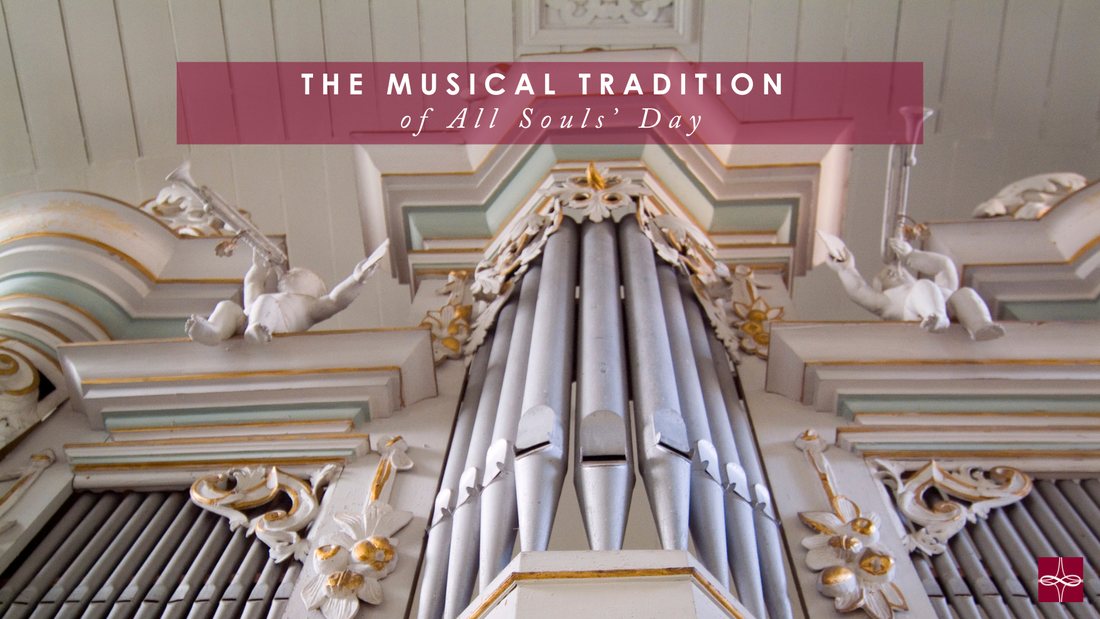

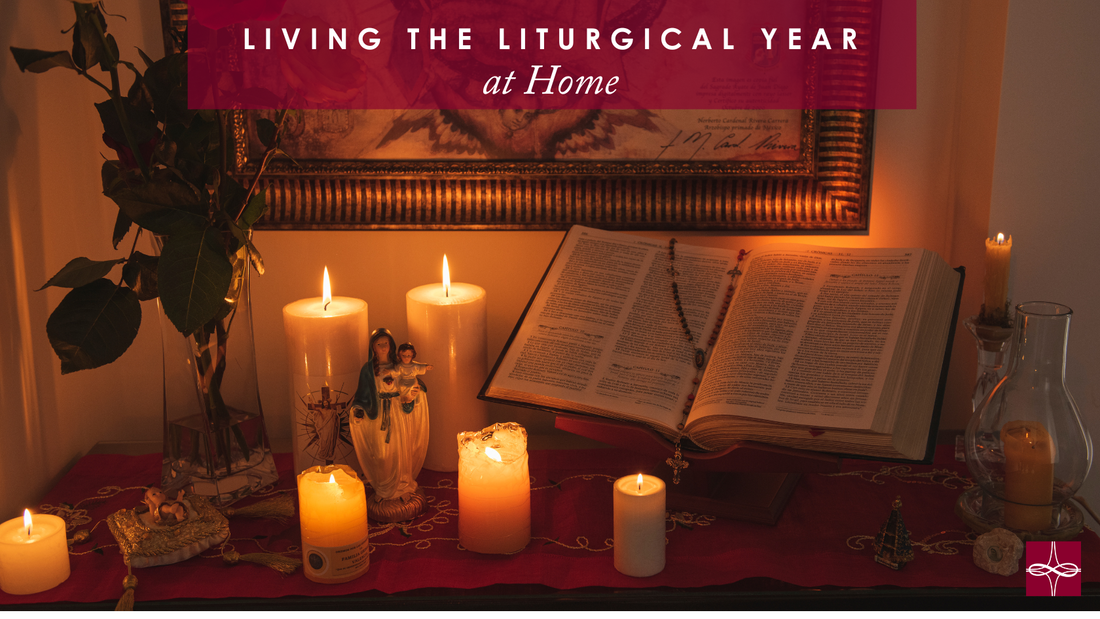

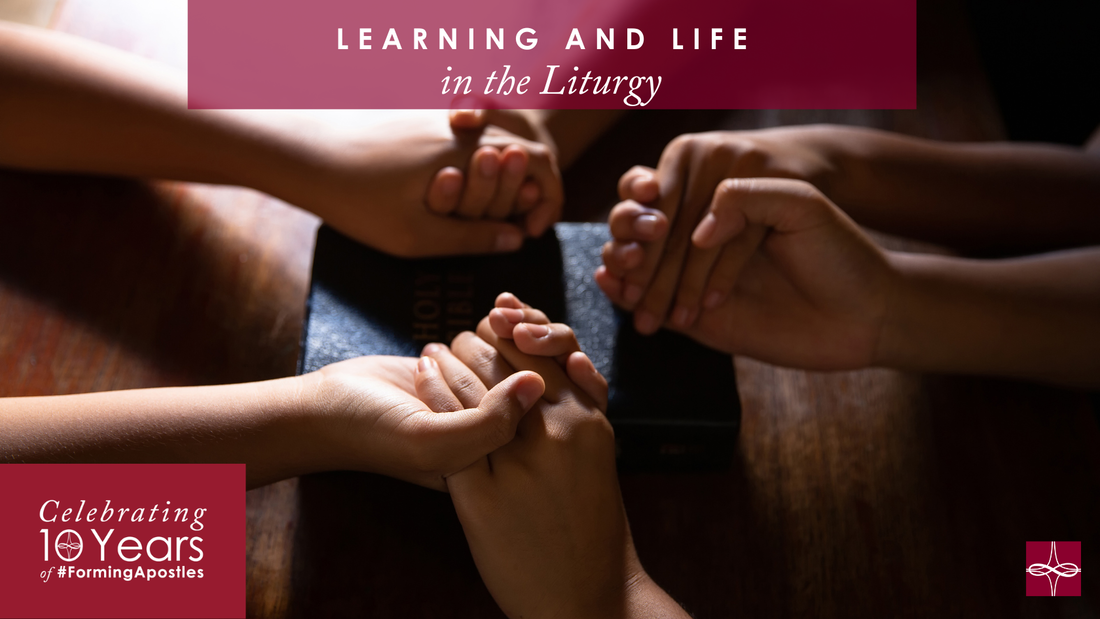

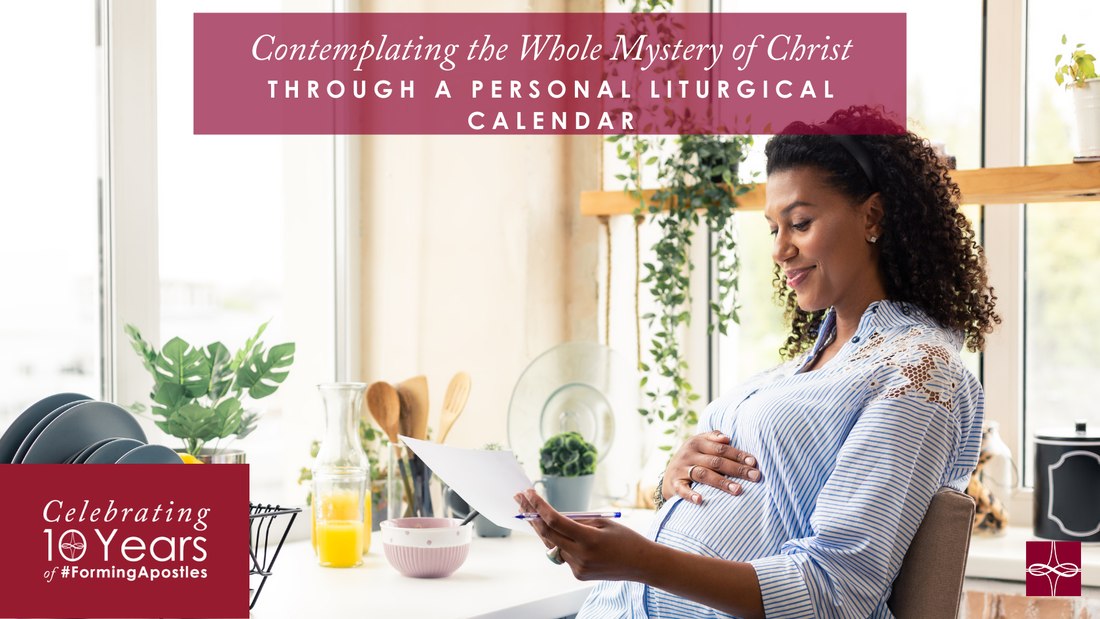
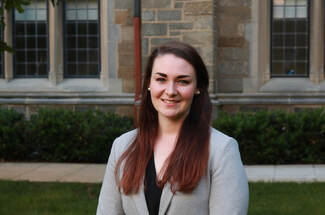


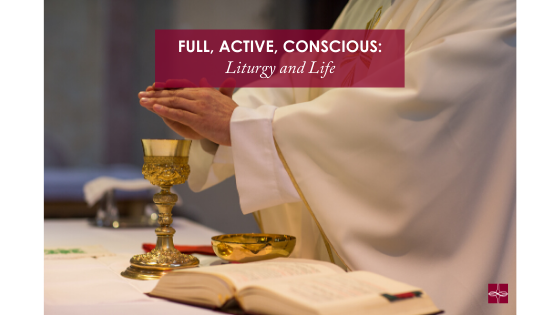

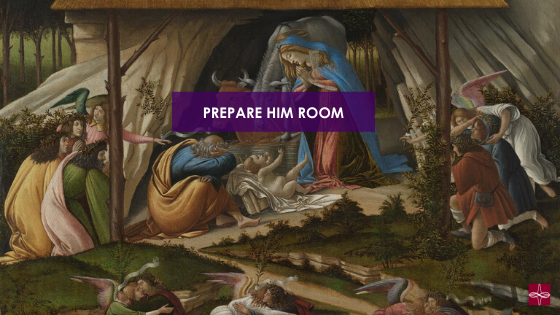

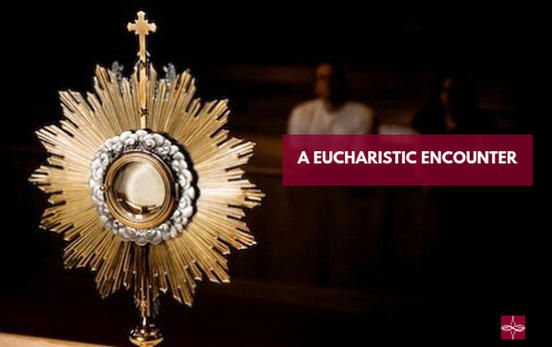

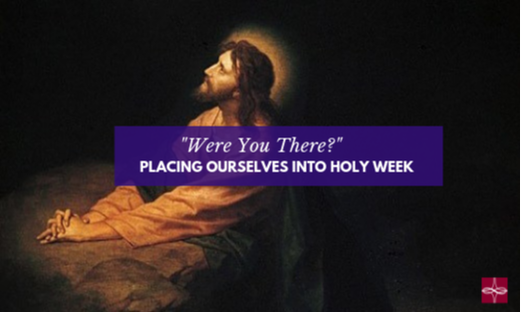

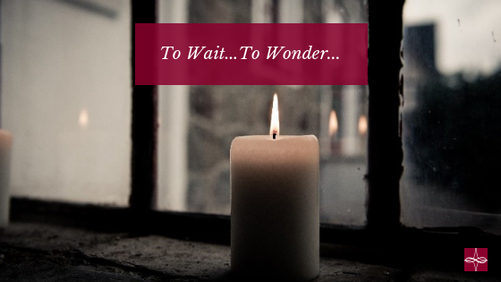



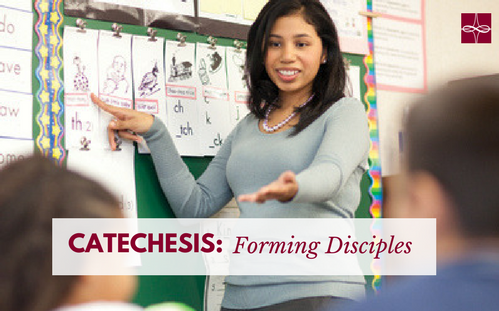

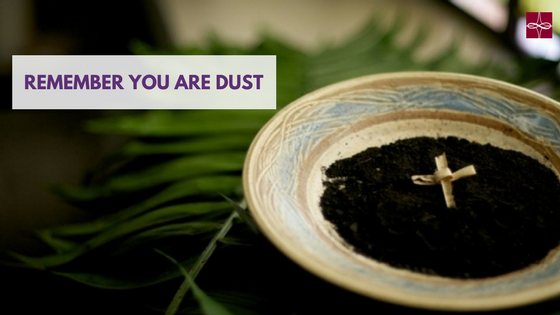



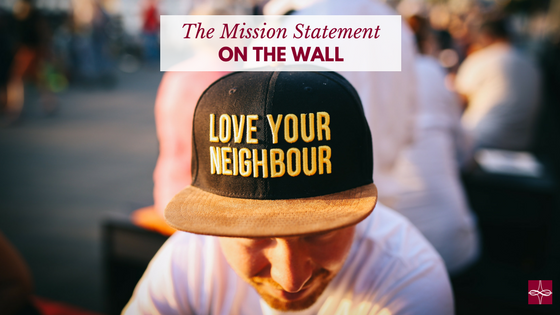

 RSS Feed
RSS Feed